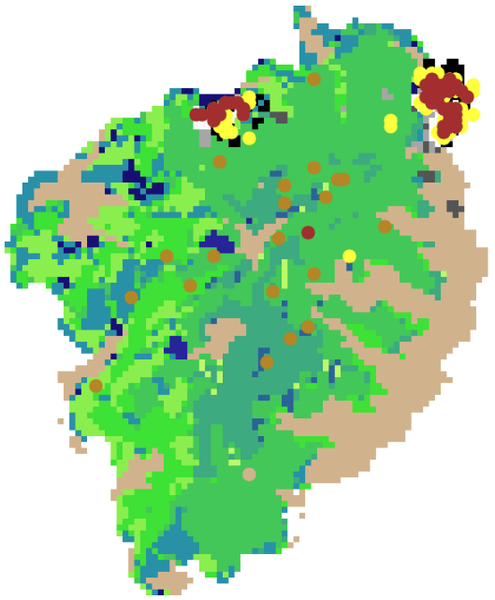FNNR-ABM 1.1.0
FNNR-ABM is an agent-based model that simulates human activity, Guizhou snub-nosed monkey movement, and GTGP-enrolled land parcel conversion in the Fanjingshan National Nature Reserve in Guizhou, China.
Quick-start guide:
1. Install Python and set environmental path variables.
2. Install the mesa, matplotlib (optional), and pyshp (optional) Python libraries.
3. Configure fnnr_config_file.py.
4. Run either server.py (for a web-based browser visualization) or graph.py (for generating data outputs).
5. Analyze the data; more information and documentation on this is available in the model’s Github repository at https://github.com/jrmak/FNNR-ABM-Primate.

Release Notes
Welcome! This project seeks to understand population demographics and factors affecting the movement of Guizhou snub-nosed (“golden”) monkeys endemic to the Fanjingshan National Nature Reserve in Guizhou, China. It uses Mesa, a library framework with tools designed to support agent-based modeling in Python 3.X.
An overview of Mesa can be found at: https://mesa.readthedocs.io/en/master/overview.html A more thorough doc can be found at: https://media.readthedocs.org/pdf/mesa/latest/mesa.pdf
Documentation for this project–as well as the source code available for download–can be found in the Github repository. Please refer to the User’s Manual.
Instructions for Running the Code:
-
Have Python 3.X installed and added to your Windows PATH, as well as the Mesa library (which comes with dependencies such as numpy, pandas, and tornado).
*If you have errors running the code, make sure Mesa’s edition is 0.8.3, and tornado’s edition is 4.5.2. -
Download the code.
-
Run ‘gui.py’.
Check the model’s Github repo for documentation and more information: https://github.com/jrmak/FNNR-ABM-Primate/
